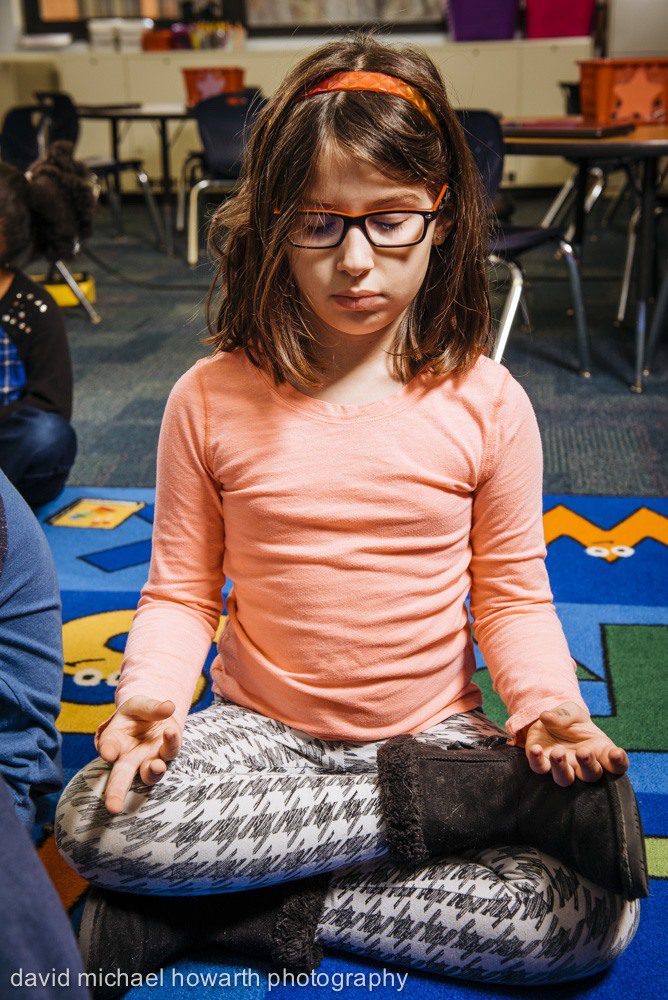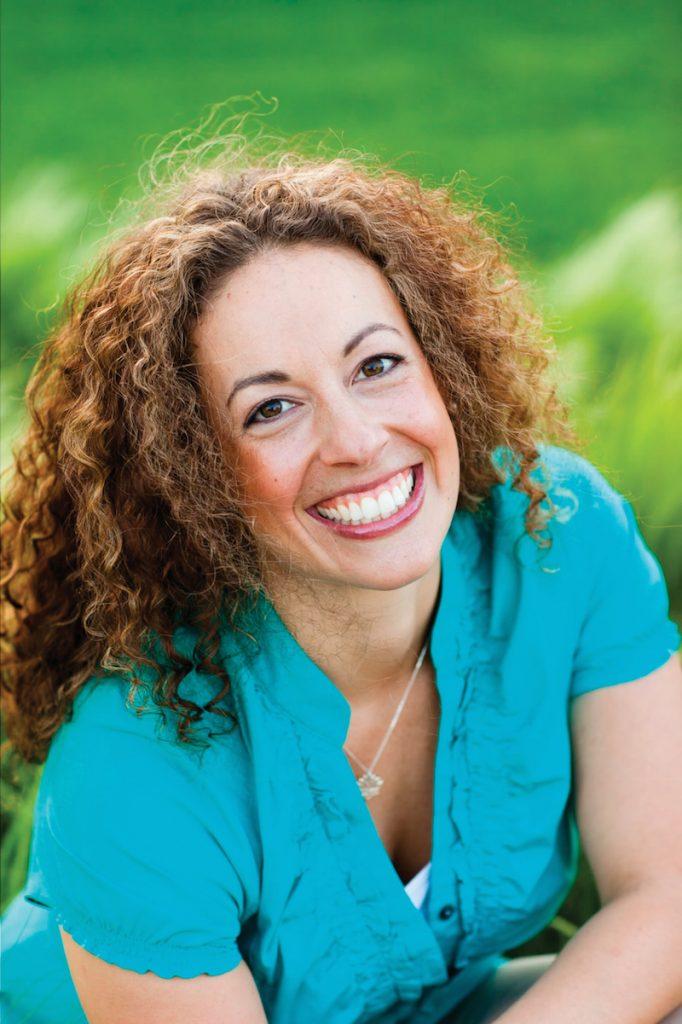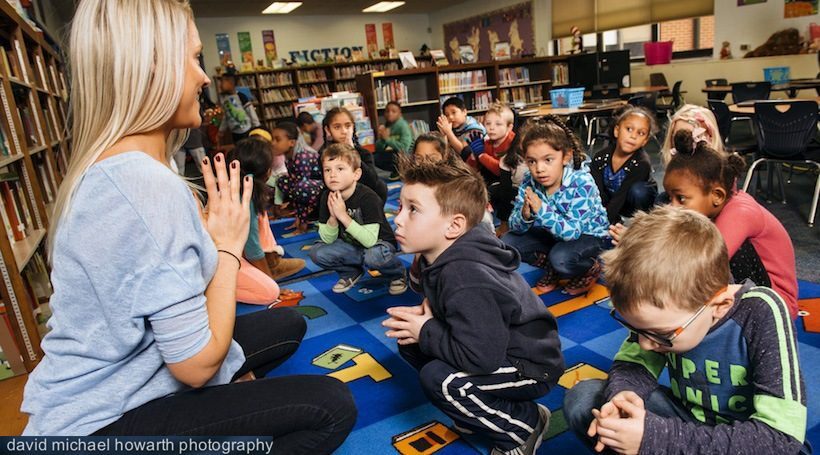There’s an unusual photograph on the wall of Natalie Izzi’s second grade classroom in Mount Holly. It shows six students in the middle of the elementary school’s busy cafeteria. But no one is talking or playing or eating – they’re sitting quietly, eyes closed and hands poised on their knees, in a meditation circle.
The students had missed that morning’s mindfulness program and, recognizing how much they needed the inner-peace, they practiced on their own.
“The fact that they sat down together to do it is incredible,” says Izzi, who heads a mindfulness program every morning at John Brainerd Elementary School. “When the students apply these techniques to their own lives and practice even when I’m not leading, that’s exactly what we want. We want to plant that seed, so they can use it for themselves.”
Several schools throughout South Jersey are now offering mindfulness as some part of their curriculum. Izzi founded her school’s program with guidance counselor Joe Hammell. Students in preschool through second grade arrive before school starts to take the 20-minute class, which is held in the library. Kids sit on the carpet as Izzi guides them through child-friendly meditation, breathing exercises and yoga poses. The program began two years ago with 12 kids who had some academic and behavioral problems. Today the program typically has about 25 kids a day, but sometimes it’s closer to 50.
“And that’s without any promotion,” Hammell says. “It’s just the kids’ word of mouth. They’re coming here all on their own.”
 Through yoga, meditation and breathing techniques, people who practice mindfulness – no matter their age – become more in touch with their emotions, themselves and the world around them, says Eileen Donnelly-Coyle, who has trained in mindfulness at Thomas Jefferson University and teaches the practice throughout South Jersey schools. The practice allows for greater self-regulation of emotion and increases the capacity for compassion. “It’s basically just training the mind,” she says. “And therefore, the body will relax.”
Through yoga, meditation and breathing techniques, people who practice mindfulness – no matter their age – become more in touch with their emotions, themselves and the world around them, says Eileen Donnelly-Coyle, who has trained in mindfulness at Thomas Jefferson University and teaches the practice throughout South Jersey schools. The practice allows for greater self-regulation of emotion and increases the capacity for compassion. “It’s basically just training the mind,” she says. “And therefore, the body will relax.”
Self-regulation and increased compassion may sound like lofty goals for second-graders, but Izzi wishes she’d been able to learn them as a 7-year-old.
“I got into mindfulness about 10 years ago,” she says. “It’s transformed my own life and helped me heal a severe anxiety disorder. If I had learned these techniques as a child, it would have helped me tremendously as an adult.”
Which is precisely how her “lightbulb moment” happened – when she realized she could give her own students the one thing she wished she had, she started teaching her second graders some child-friendly yoga poses. It started simply with one or two poses and a few breathing techniques after lunch when they were rowdy from playtime and needed help concentrating.
Back then, Hammell was the new guidance counselor at school. He saw what Izzi was doing and approached her with the intention of creating a program for more students – and they went for it.
After attending yoga and mindfulness for children training, the pair felt they had the tools they needed to start their program. Funds weren’t exactly an issue, either – the program was using school space and didn’t require any special equipment. But the pair isn’t afraid to campaign when they need it. They recently ran a fundraiser to purchase yoga mats so the children can practice outside on nice mornings.
Though it’s only a small chunk of the students’ days, both Hammell and Izzi feel as though the program has a monumental impact.
“It’s amazing to see their transformation,” Izzi says. “They go from not being able to sit still longer than five seconds to being able to sit there for a few minutes and regulate their breathing and emotions.”
For Donnelly-Coyle, these skills are invaluable to young people, because mindfullness isn’t about breathing and meditation for 20 minutes. It’s about taking those moments of being centered and accessing them when you’re stressed, upset or distracted.
“It’s about the value of a quiet mind,” she says. “If someone does something to make you angry, you can get back on track quicker. You don’t have to be reactive. The training affords you time to pause and breathe. You have a toolbox that you can take anywhere.”
While these tools are important, Izzi also understands her students may need a little more support. To meet this need, she’s created a “reset corner” in her classroom with a yoga mat, a timer and a bulletin board of child-friendly yoga poses and breathing strategies.
“I tell them that if they’re upset or feeling stressed, they can go in the corner and set the timer, do some breathing, and then go back to work,” Izzi says.

Roots & Wings founder Jenny Mills provides mindfulness training for teachers and students
Because of the success of their program and parents’ positive feedback, Izzi and Hammell started an after-school wellness group for teachers at Brainerd who wanted to practice mindfulness themselves and incorporate it into their classrooms.
They’re also developing a teachers’ workshop, where they explain the science of mindfulness, demonstrate child-friendly yoga poses and meditation techniques, as well as discuss how to handle opposition that might come up, like the idea that mindfulness techniques are religious and shouldn’t be practiced in pubic schools.
“We’re all living beings, we all breathe,” Izzi is quick to note. “Focusing on that breath and doing poses has nothing to do with religion. It has to do with stress management.”
For teachers who want to incorporate mindfulness into their classroom, Jenny Mills, founder of the mindfulness program Roots & Wings, suggests they learn the practice for themselves first. It allows educators to “be more in control of themselves so they are better able to manage the demands of the classroom,” Mills adds.
Teachers can then take those things they’ve learned for themselves and add them to their student’s toolkits – just like Izzi did. And in today’s world, Mills argues, it’s more important than ever.
“We can raise a generation of children who are more aware of their own emotions and are kinder to themselves and others,” Mills says. “We can really change society as a whole by teaching kids to have compassion instead of just focusing on the things that divide us.”














